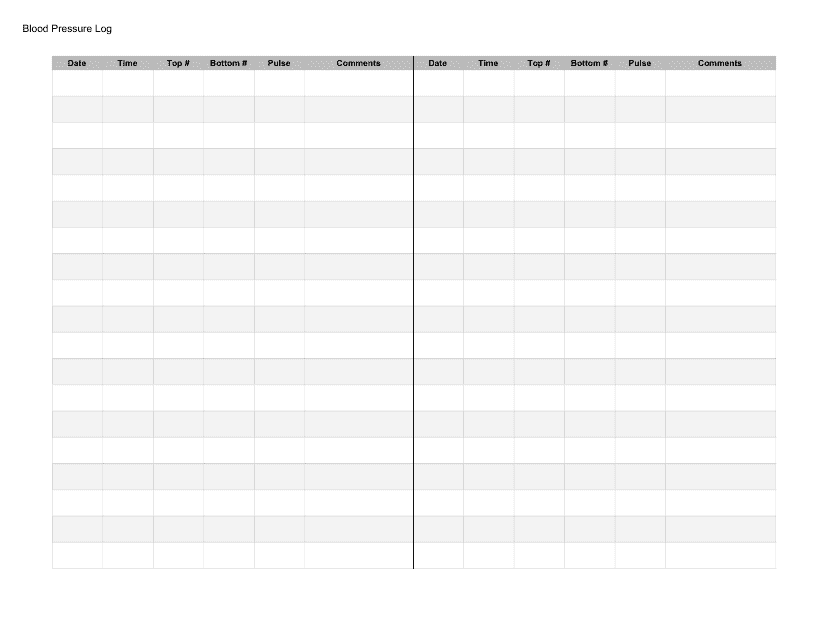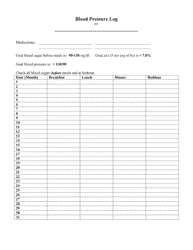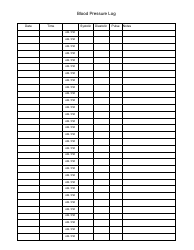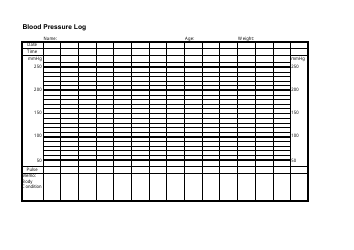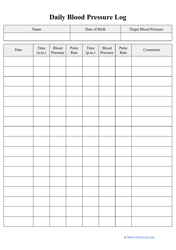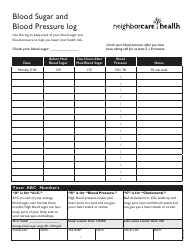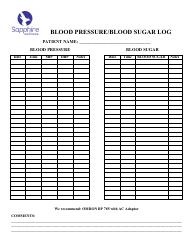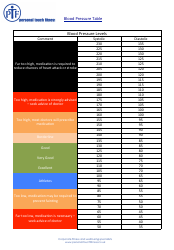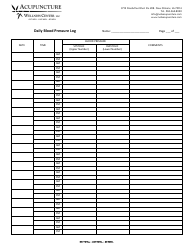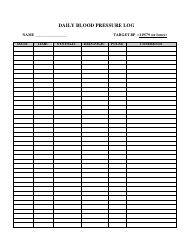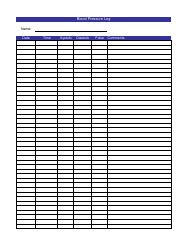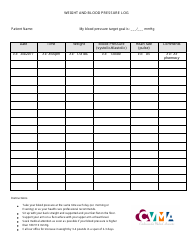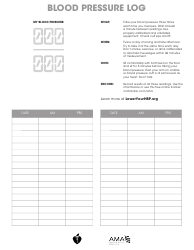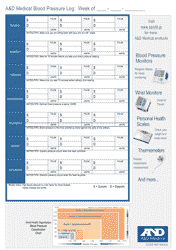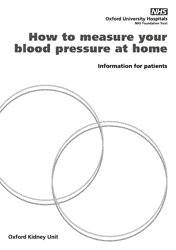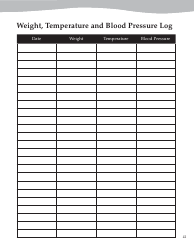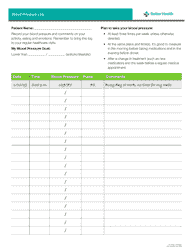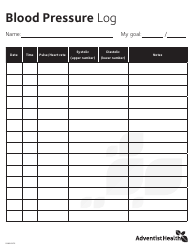Blood Pressure Log - Black and White Table
A Blood Pressure Log - Black and White Table is a document typically used by individuals who need to monitor their blood pressure regularly. This can be crucial for patients suffering from health conditions like hypertension or heart disease. This table allows them to document and track their blood pressure readings over a certain period. Information recorded can contain date, time, systolic and diastolic measurements, pulse rate, and notes on any symptoms or medication taken. This log can then be shared with their healthcare provider to assess the effectiveness of ongoing treatments or to identify any potential health risks.
The Blood Pressure Log - Black and White Table is typically filed by individuals who are monitoring their blood pressure levels. It can also be filed by healthcare professionals like doctors and nurses ensuring consistent tracking of a patient's blood pressure over time. It's not specific to any country, including USA, Canada, India, or Australia, and is a universal document used in the healthcare field.
FAQ
Q: What is a blood pressure log?
A: A blood pressure log is a document or a digital tool where you can record blood pressure readings over time. These readings can be used to monitor any changes or trends in your blood pressure levels.
Q: Why should I use a blood pressure log?
A: Using a blood pressure log can help you and your healthcare provider to understand your blood pressure patterns better. It can provide critical information for diagnosing and managing conditions like hypertension.
Q: What is a black and white table in a blood pressure log?
A: A black and white table in a blood pressure log refers to a simple, printable version of a blood pressure log. It's merely a clear, high-contrast chart where you can record your blood pressure readings.
Q: How to use a blood pressure log?
A: After taking your blood pressure, you would write down the date, time, and your systolic and diastolic figures on the log. Over time, the log will help reveal patterns or changes in blood pressure.
Q: How often should I check my blood pressure at home?
A: According to the American Heart Association, you should regularly check your blood pressure if you've been diagnosed with high blood pressure. It's recommended to measure your blood pressure twice a day, in the morning and in the evening, for a week.
Q: What do the numbers mean in a blood pressure reading?
A: A blood pressure reading shows two numbers: the systolic pressure, the top number, which indicates how much pressure your blood is exerting against your artery walls when the heart beats; and the diastolic pressure, the bottom number, which represents the pressure in your arteries when your heart is at rest between beats.
Q: What is normal blood pressure?
A: According to American Heart Association, normal blood pressure is generally regarded as a reading less than 120/80 mm Hg.
